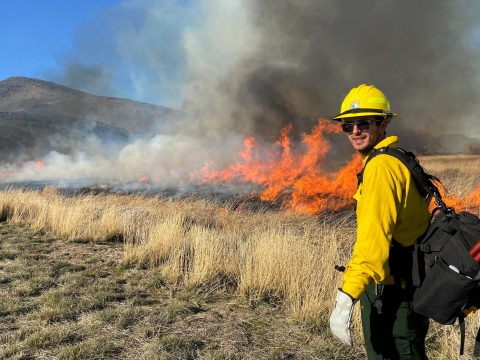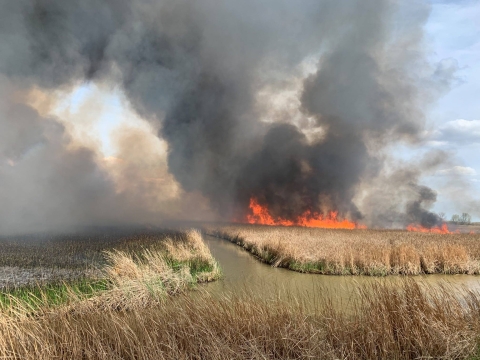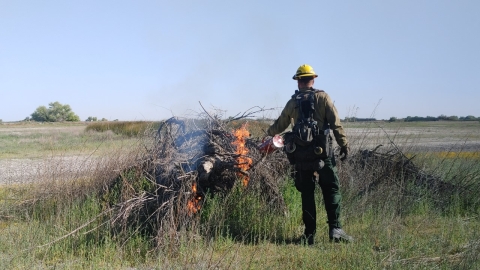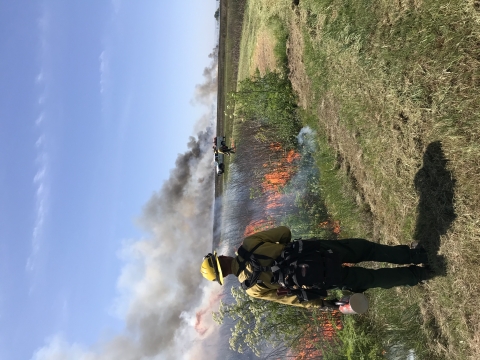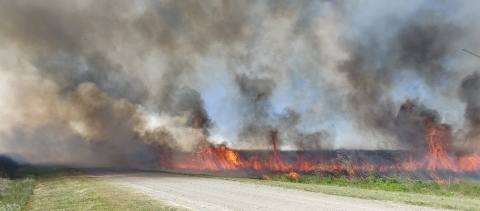Much like a doctor uses medication to treat an ailment, the U.S. Fish and Wildlife Service often prescribes fire to increase the overall health of the land and to protect communities from catastrophic wildfire.
For the U.S. Fish and Wildlife Service, prescribed fire is the planned application of low to moderate intensity burns onto the landscape by fire and fuel specialists to meet land management objectives.
“Prescribed fire is a tool that national wildlife refuges use throughout the country and, in particular, California and Nevada, to reduce fuel loads and refresh habitats by cleaning up older or dead vegetation/buildup,” said Jennifer Hinckley, regional fire management coordinator for the Service. “This tool can lower the intensity or even prevent wildfires on the land by reducing the fuel [vegetation] available for consumption by wildfires. Lower intensity fires are safer and easier for firefighters to control.
“All of these efforts are vitally important each year as we head into the western wildlife season.”
Some recent prescribed burns on refuges in the Service’s Pacific Southwest Region (California, Nevada, and Klamath Basin, Oregon) include:
A prescribed burn is the controlled use of fire to restore wildlife habitat, reduce wildfire risk, or achieve other habitat management goals. We have been using prescribed burn techniques to improve species habitat since the 1930s.
Learn more about prescribed burn was conducted by fire and collateral fire staff from San Luis National Wildlife Refuge Complex. The approximately 200 wetland acre area targeted was dominated by dense cattails and tules. The purpose of the prescribed burn was to reduce hazardous fuel loading and enhance wildlife habitat, particularly by opening up the stand for use by certain waterbirds and enhancing nesting habitat for the colonial nesting tricolored blackbird. Credit: USFWS
For efforts in years past, check out our Flickr album of prescribed burn photos.


